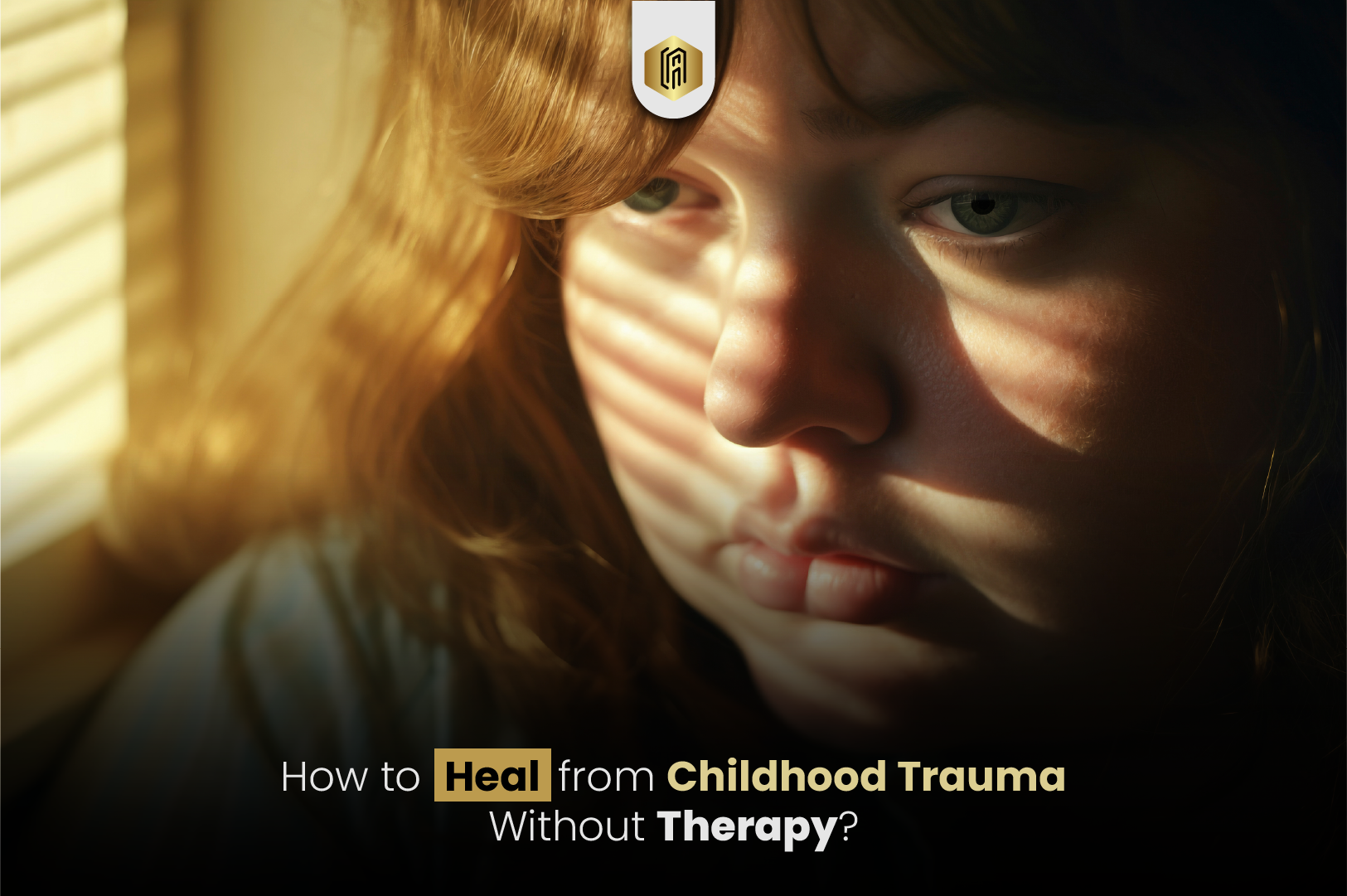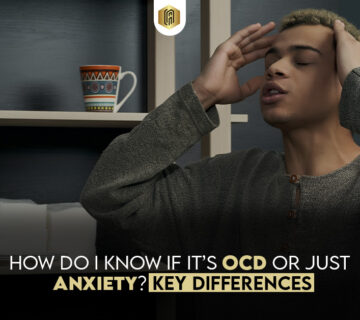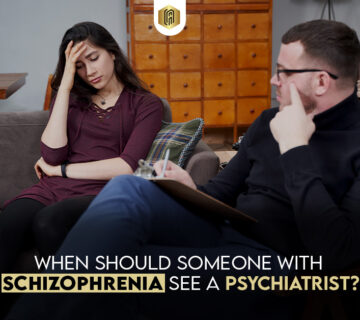Heal childhood trauma without therapy. Practice self-care. Build trust with supportive people. Include mindfulness, set boundaries, exercise, and explore creativity to cope and heal.
Focusing on self-compassion and awareness helps people move to heal. Childhood trauma leaves deep scars. However, healing is possible without therapy for those who prefer other options.
We will explain how to heal childhood trauma without therapy. First, we’ll cover mindfulness and setting boundaries. These methods enable you to take charge of your healing.
When facing mental struggles, contact Ascension Psychiatric Services. Their team offers vital support to restore your balance and well-being.
Recognizing Childhood Trauma
Childhood trauma casts a long shadow, stealing joy and sabotaging relationships. Recognizing its scars is crucial for healing and growth. By spotting trauma’s signs, you’ll see its effects. Then, you’ll find a path to recovery. Knowledge leads to action. It can create a better future, free from the past’s burdens.
Identifying Signs of Childhood Trauma
Childhood trauma can be subtle and hard to detect. Its signs vary widely. Yet, you can spot common signs. So, if you or someone you know has experienced childhood trauma, keep watch:
- Hyperarousal: This means always being tense. It also involves being sensitive and having trouble focusing.
- Hypervigilance: A constant fear of danger causes high anxiety. It makes one always search for threats.
- Emotional dysregulation: Moods change quickly. Strong emotions can overwhelm one’s control. These feelings are hard to manage.
- Flashbacks or intrusive memories: Trauma brings flashback memories. Distressing thoughts force a painful reliving of past horrors. Intrusive flashbacks, intense and unwelcome, pierce the present.
- Avoidance behaviors: Trauma survivors often avoid triggers of painful memories. This strong dislike influences their daily choices and actions.
- Difficulty forming close relationships: Trust issues create barriers. Cautious people fear pain and struggle to connect. This makes close relationships hard, as walls block intimacy. Being vulnerable seems too risky, causing relationships to fail before they start.
- Coping through harm: Drugs, self-injury, and destructive acts hide deeper pain.
Understanding the Impact of Childhood Trauma
Childhood trauma affects many aspects of life. Understanding its impact on healing is crucial. Trauma has lasting effects. Hence, recognizing these effects is key.
- Physical Issue: Often shows hidden emotional pain. Headaches, stomach issues, and pain signal the body’s need to heal after trauma. The mind and body connect, mirroring each other’s struggles with healing.
- Psychological Health: Mental health issues can cause anxiety, depression, PTSD, and low self-esteem. Additionally, they may cause emotional instability.
- Social Interactions: Trauma can damage social skills. It may lead to trust issues, isolation, and difficulties in forming healthy relationships.
You can heal from childhood trauma without therapy. First, acknowledge its impact. Understand its deep influence on your life. Then, explore strategies to heal and grow.
How to Heal Childhood Trauma Without Therapy
Childhood trauma can affect mental and emotional health. Therapy is helpful, but other methods exist. These alternatives can heal trauma without therapy.
-
Exploring Triggers and Emotional Responses
How to heal yourself emotionally?
Triggers can bring back trauma. Certain sights, sounds, and smells might recall painful memories and strong emotions. However, recognizing these triggers helps you regain control. Mindfulness and grounding techniques can calm your mind. Understanding your triggers improves your ability to handle trauma.
-
Self-Reflection and Awareness
Healing from childhood trauma begins with looking inward. First, we process feelings and understand past reactions. This awareness highlights wounds that need care. It sets the stage for growth and healing. Reflecting on ourselves helps us confront history, building resilience and recovery.
-
Healing Through Self-Reflection
Spend time journaling or meditating to reflect on your past. Acknowledge your thoughts and emotions. Recognize behavior patterns. This self-awareness fosters healing. It shows how childhood trauma impacts your life now.
-
Solutions for PTSD and Hypervigilance
People with PTSD can use grounding techniques to manage issues. This helps them stay present. If you’re always on guard, it’s crucial to rebuild trust. Trust yourself and others. Set clear boundaries to feel safe. Learn to say no when necessary.
-
Solutions for Depression
Dealing with depression linked to trauma often requires creating a positive routine. Small, achievable goals can bring joy and structure back into your life. Emotional journaling can help release pent-up feelings. It gives you a safe space to process your emotions.
-
Building a Support System
You don’t need therapy to build a support network. Friends, family, or groups offer understanding and validation. Importantly, set healthy boundaries to keep these relationships helpful and not overwhelming.
-
Practicing Self-Care and Regulation Techniques
Breathe deeply. Meditate. Do yoga. Ground yourself. Write in a journal. Exercise. Create art. Care for your emotions. Heal with self-care. Adopt these practices. They’re vital for recovery and well-being.
-
Seeking Alternative Healing Modalities
Therapy is frequently recommended for trauma. However, yoga, meditation, and art therapy are equally beneficial. These methods aid healing in both body and mind.
-
Yoga and Meditation
Yoga and meditation calm nerves. Grounding poses release trauma. Breathwork reduces tension. Guided imagery fosters calm. Loving-kindness practice builds self-compassion. These techniques provide natural relaxation and healing.
-
Creative Expression and Art Therapy
Trauma often goes unspoken. Yet, art provides an escape. Painting, writing, or dancing reveals hidden emotions. These activities create a safe space. They allow us to explore deeply. They slowly reveal hidden pain.
In conclusion
How to Heal from Childhood Trauma Without Therapy?
You can heal from childhood trauma without therapy. Use self-care, mindfulness, and creative outlets. Building a support system and practicing self-awareness are keys to emotional recovery. With patience and the right tools, individuals can find healing and growth.
FAQs
How to move on from childhood trauma?
Healing from childhood wounds starts with recognition. Then, self-care helps you move forward. Next, find trustworthy allies. You can express yourself through mindfulness, writing, or art. Set limits and recognize emotional triggers. Recovery is unique and ongoing. Allow time to process, reflect, and heal. Embrace this journey it leads to growth and restoration.
How to start healing journey of childhood trauma?
Acknowledge your trauma and its impact. Reflect on experiences. Use journaling or meditation. Try mindfulness, yoga, or art therapy to boost mental health. As you heal, seek supportive relationships.
Does childhood trauma ever go away?
Childhood trauma may not fully disappear. However, its impact can lessen over time with the right support and strategies. Healing doesn’t mean erasing the trauma. It means managing its effects healthily. With self-awareness and mindfulness, people can grow. They can reduce trauma’s influence and move forward with more peace and resilience.






No comment